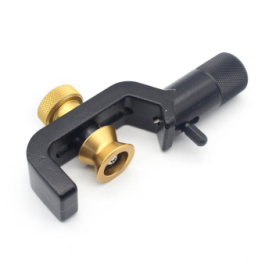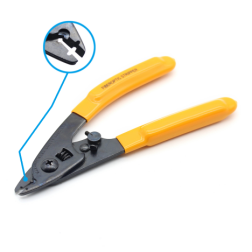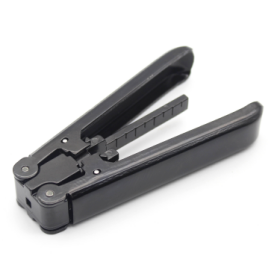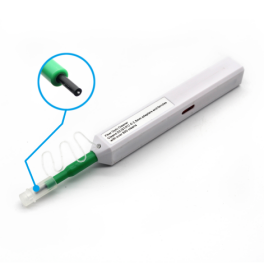As a new generation of solid-state light sources, Light Emitting Diodes (LEDs) have many advantages such as long lifespan, high efficiency, energy saving, and environmental protection, and are widely used in displays. In the field of lighting, with the development of science and technology, advanced technologies are continuously used in semiconductor production, so that the luminous efficiency of LEDs continues to increase and costs continue to decline.
The core part of the LED is the PN junction. When the injected electrons and holes are combined in the PN junction, the energy is directly converted into light energy. However, not all the converted light energy is enough to be emitted outside the LED. It will be in the PN junction and ring. Oxygen resin/silica gel is converted into heat energy by absorption sheet. This kind of heat energy is a huge side effect to the lamp. If it cannot effectively dissipate heat, the temperature inside the LED will increase. The higher the temperature, the lower the LED's luminous efficiency, and the shorter the life of the LED. In severe cases, LED chips will fail immediately, so heat dissipation is still a huge obstacle to high-power LED applications.
Existing cooling technology
Existing heat dissipation technology: 101 is a heat-dissipating aluminum profile; 102 is a thermal-conducting silicone gasket/silicone; 103-106 is composed of an aluminum substrate, in which 103 is an aluminum plate, 104 is an insulating layer, 105 is a copper-plating layer, and 106 is a solder resist 201 A 204 constitutes an LED lamp, wherein 201 is an electrode, 202 is an LED base, 203 is a PN junction of the LED, and 204 is a silicone, and then the solder is used to solder the LED to the copper-clad layer of the aluminum substrate as shown by the black arrow in FIG. The heat emitted by the PN junction of the LED passes through a solder paste layer of the LED base, a copper layer, an insulating layer, an aluminum plate, a heat-conductive silicone gasket, a grease, and a heat-dissipating aluminum material, which are distributed in the air, thus completing the heat dissipation process.
LED base thermal conductivity is about 80W / / mk; solder paste layer thermal conductivity greater than 60W/mk; copper layer thermal conductivity of about 40OW/mk, aluminum plate and aluminum thermal conductivity of about 200W / mk, insulation layer The thermal conductivity is about Iw/mk, and the thermal conductive silicone gasket/silicone is about SW/mk, but the closer the PN junction of the LED is, the higher the heat flux density is, and the thermal conductivity silica gel sheet/silicone grease already has the lateral thermal conductivity of the aluminum sheet. The heat flux density of the insulating layer is much higher than that of the heat-conducting silicone gasket/silicone. Therefore, it can be clearly seen that the heat-dissipation bottleneck lies in the insulating layer of the aluminum substrate.
LED lamp cooling technology
Since the heat dissipation bottleneck is the insulation layer on the aluminum substrate, then for the thermoelectrically separated LED, the following new processing technology can be used to process the aluminum substrate, which greatly enhances the heat dissipation capacity of the LED lamp as shown in Figure 2: Under the LED pedestal, holes are drilled to remove the copper layer and the insulation layer, and the aluminum plate is exposed. However, aluminum cannot be directly soldered. It is also necessary to plate the exposed aluminum plate with a solder metal layer after repeated studies and verifications. The following processing techniques are used: first, zinc is settling on the exposed aluminum plate, nickel is plated on the zinc surface, then copper is plated on the nickel, and finally tin or gold is applied on the copper. The coating processed by the above processing sequence has strong adhesion. The thermal conductivity is good. After the above plating process, the LED can be welded on the aluminum plate.
New aluminum substrate processing technology
After the welding is completed, the heat generated by the PN junction of the LED passes through a solder paste block of the LED base, an aluminum plate, a thermal conductive silicone gasket, a grease, and a heat-dissipating aluminum profile, which are dispersed in the air, and the insulating layer with a very small thermal conductivity is removed. Greatly enhanced.
New and old technology LED lamps temperature contrast
Cooling capacity In order to compare the real effect of the new process to enhance heat dissipation, we use the old and new processing technology to produce two identical models of LED lamps, and test the temperature of each point of the LED lamp under the same conditions. Under the new processing technology, LED lamps and lanterns The temperature of the LED pedestal in the chassis has dropped significantly by 4.6, which has played a very good cooling effect and can greatly increase the stability and life of LED luminaires.
Dowell Group Optical Tool used in all kinds of Fiber cable stripper and cutter,
· Professional grade tool ideal for slitting the corrugated copper, steel or aluminum armor layer on Fiber Feeder, Central Tube, Stranded Loose Tube fiber optic cables and other armored cables
· Versatile design allows jacket or shield slitting on non-fiber optic cables as well
· Tool slits outer polyethylene jacket and armor in one operation
– Performs longitudinal slitting and circumferential (ringing) for end stripping
– Blade rotates 90 degrees by activating blade lever, allowing easy mid-span preparation (ringing and slitting)
· ACS is adjustable from 0.315 in. (8 mm) to 1.125 in. (28.6 mm) cable O.D.
· Adjustable blade depth to 5.5 mm maximum to accommodate different cable jackets
· Cable guide wheel provides cable stability and allows for easier tool movement along the cable
· Rugged anodized aluminum and steel construction
· Cable guide wheel for smaller cable sizes can be ordered separately
· Height: 5 in (127 mm)
· Weight: 10 oz (284 g)




FAQ:
Q: Are you trading company or manufacturer ?
A: We are factory.
Q: How long is your delivery time?
A: Generally it is 3-5 days if the goods are in stock. or it is 15-20 days if the goods are not in stock, it is according to quantity.
Q: Do you provide samples ? is it free or extra ?
A: Yes, we could offer the sample for free charge but pay the cost of freight.
Q: What is your terms of payment ?
A: Payment<=5000USD, 100% in advance. Payment>=5000USD, 30% T/T in advance , balance before shipment.
If you have another question, pls feel free to contact us as below
Optical Tools,Wire Electrician'S Scissor,Fiber Cable Cutter,Drop Wire Stripper
DOWELL INDUSTRY GROUP LIMITED , http://www.dropwirechina.com
